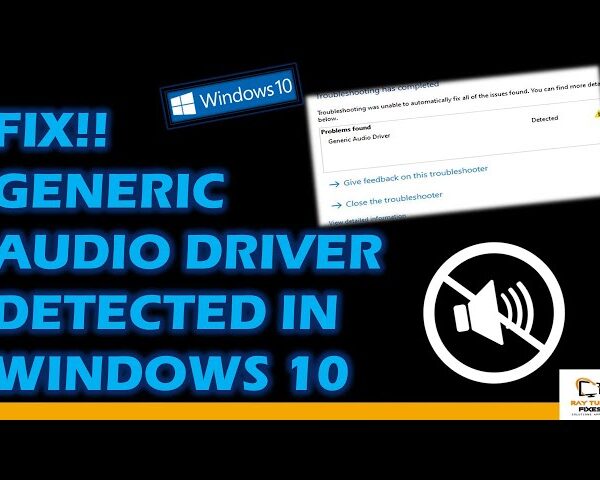Eleven Software Troubleshooting Tips
Check out our step-by-step guide to debugging software before calling tech help.
Your organisation or library relies on software to function, and unannounced programme crashes and error messages might put a stop to your work. It’s tempting to call tech support right away when this happens. But, before you make that call, there are some fundamental measures you may do to address or narrow down the sources of software problems on your own.
Try these troubleshooting steps in the order given below the next time you experience a software problem. Take careful notes on the steps you take. That way, if a tech support call is required, you’ll at least know what isn’t causing the problem.
- Close any open apps to free up RAM.
Random Access Memory (RAM) is used in every piece of software (RAM). The more software you have installed on your computer, the more RAM it consumes. This is especially problematic if you’re using an older computer with limited RAM. If a software programme refuses to load or runs slowly, the first thing you should do is close all other open programmes.
Both Windows and Macintosh operating systems (OS) include tools that display this information if you want to figure out which open applications are eating your RAM:
In Windows, press Ctrl+Alt+Delete, then select Start Task Manager from the drop-down menu. Click the Processes tab in the resulting window, then the Memory menu item. This classifies all open processes according to how much RAM they use. The End Process button can be used to terminate a rogue process. Before you do that, you should do some study on the process to ensure that you don’t interrupt a crucial process or programme by accident.
Use the Activity Monitor in Mac OS X. (called the Process Viewer in older versions of OS X). Go to Applications > Utilities to get to the Activity Monitor. After you’ve opened the Activity Monitor, sort the apps by RAM utilisation by clicking the column labelled “RAM Usage.”
- Restart the application.
Software issues might arise as a result of a conflict with other applications or simply from difficulties with the software’s startup. These problems can occasionally be resolved by shutting down and restarting the programme.
- Restart your computer after shutting it down.
Try resetting your computer if restarting the troublesome software does not address the problem. Re-open the application in question after the computer has fully rebooted to determine if the problem has been resolved.
- Look for assistance on the internet.
It’s likely that whatever software issues you’re having have already been experienced by someone else. As a result, there’s a considerable possibility you’ll be able to obtain assistance on the Internet. Here are a few resources to help you get started:
Answers can be found by using the following methods: Include the software program’s name and version, the difficulty you encountered, and the circumstances surrounding the problem in your search engine inquiry. If you received a specific error message, type the precise text of the problem message, as well as the application’s name.
Visit the vendor’s website to learn more: Answers to frequently asked questions, product documentation, and user discussion forums are all available from most software manufacturers.
Look at these other sites: Other websites that offer technology tutorials, articles, and discussion forums are listed in TechSoup’s article Learning About Technology Online.
- Revert any recent hardware or software modifications.
Software issues can arise as a result of changes to software and hardware, such as:
Software conflicts: Newly installed software may cause conflicts with other software. Symantec Norton Antivirus, for example, can cause conflicts with other antivirus software. If you recently installed another antivirus application and Norton Antivirus is no longer functioning properly, uninstalling the other antivirus product may be the solution.
Undo any recent modifications to your computer’s settings and try opening the software again. The Windows Control Panel, for example, has a setting called “Set Program Access and Defaults” that allows you to restrict access to certain programmes. It’s possible that if you mistakenly disable access to a software here, it won’t run.
Hardware conflicts, such as scanners and printers, caused by new or incorrectly installed hardware.
If you’ve just added new hardware to one of your PCs, try detaching it to see if the software problem
goes away.
- Uninstall and then reinstall the software.
Critical programme files have been removed, modified, or deleted, which might create software difficulties. Many Windows applications, for example, rely on Dynamic Link Library (DLL) files to carry out essential functions. Several apps will frequently use the same DLL file. It’s possible that when you uninstalled a software, you also uninstalled DLL files that another programme relied on. Similarly, installing an application may result in the addition or updating of DLL files. Applications that rely on such DLL files may become unstable or cease to function altogether.
You can totally delete the malfunctioning software and then reinstall it to confirm that all necessary files are present. Even if you use the application’s built-in uninstall procedure (if it has one), you should still examine your hard drive’s Program Files folder — normally on the C drive — for any leftovers of the programme and delete any files or folders you find.
Check to see whether a new version of the programme is available before reinstalling. It’s possible that the vendor or developer has released a bug fix that fixes the problem you’re facing.
- Keep an eye out for software updates.
Bugs can also be fixed by software providers sending patches, which are tiny software upgrades that address known issues. Even if you have the most up-to-date version
- Run a virus and malware scan.
Viruses, spyware, and other harmful software (often known as “malware”) can cause software to freeze, crash, or stop working altogether.
If steps 1 through 8 haven’t resolved your software issue, you should scan your computer with antivirus and anti-malware software to detect and remove viruses and malware. Use the most thorough scan mode available, then restart your computer if your antivirus or anti-malware software detects any risks.
- Look for a firewall issue.
Instead of a centralised hardware or software-based firewall, some organisations may choose to install personal firewall software on each computer. Personal firewalls can be a valuable line of defence against hackers and other security concerns, but they can also be a source of vulnerability.
Frequently, firewalls display notifications asking whether an application should be allowed to run or blocked. As a result, it’s easy to tell the personal firewall to stop a programme from running by accident. Examine the firewall’s settings to see if the troublesome software has been added to the list of programmes to block. If this is the case, adjust the firewall’s settings to allow the software to run, then check to see if the problem persists.
- Switch to Safe Mode.
OS settings or other system issues might cause some programme faults. Safe Mode is a troubleshooting environment available in both Windows and Mac operating systems. Safe Mode disables non-essential applications and processes, allowing you to isolate problems more easily.
By pressing the F8 key while your computer is loading up, you can enter Safe Mode on most Windows machines. Enter Safe Mode on a Mac by holding down the Shift key as the computer powers up (or immediately after it boots up).
Once your computer is in Safe Mode, run the troublesome software and try to reproduce the issue you were experiencing while it was in regular mode. If you don’t experience the same problem in safe mode, it’s likely that the problem was caused by your operating system or another software rather than the app you’re debugging.
- Make sure your hard drive is defragmented.
You could defragment your computer’s hard disc as a final diagnostic step. Defragmenting reorganises the file structure on your hard disc to improve system performance. Because
defragmenting is designed to make your entire system perform faster, it will be most useful if you’re experiencing overall sluggishness on your computer. It’s important to note that defragmenting a hard disc is only applicable to Windows-based PCs.
A built-in disk-defragmentation programme is included in most recent Windows editions, including XP, Vista, and Windows 7. Start > All Programs > Accessories > System Tools > Disk Defragmenter to start it. Defragmenting a hard disc can take a long time, so do it when you’ll be gone from your computer for a few hours.
Conclusion
If the previous suggestions haven’t resolved your software issue, it’s time to contact technical assistance. You’ll be able to help them narrow down the problem at the very least by outlining the troubleshooting methods you’ve previously tried.
















